| Columns Retired Columns & Blogs |
is it good choice for vocal and violin music?
i want to buy Cary 300 SEI for my ProAc 1sc
thanks.
As expected from its diminutive size, the Response One SC is not very sensitive. I calculated its B-weighted sensitivity as 84.4dB/2.83V/m, which is, however, 2dB or so more sensitive than the BBC LS3/5A minimonitor. Its plot of impedance magnitude and frequency against frequency (fig.1) reveals it to be a relatively easy load for an amplifier to drive, which explains why Wes Phillips found it worked well with the single-ended Cary amplifier. However, its impedance does vary widely, meaning that amplifiers with high source impedances will change their frequency responses to a subjectively significant extent.
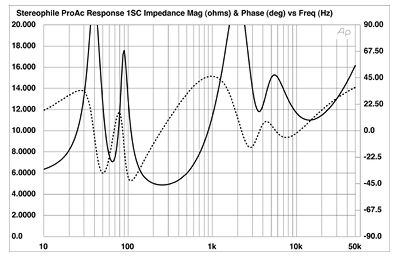
Fig.1 ProAc Response One SC, electrical impedance (solid) and phase (dashed) (2 ohms/vertical div.).
The low-frequency saddle at 65Hz in the magnitude curve indicates the tuning frequency of the rear-mounted reflex port, which in turn implies only moderate bass extension. However, as can be seen from fig.2, the reflex tuning is somewhat underdamped, which means that the port output (the lefthand trace) is generous. Apart from a small peak at 800Hz, the port is free from coloration-inducing midrange resonances. The woofer output (middle trace) drops off rapidly below 100Hz, reaching its minimum-motion point, as expected, at the port tuning frequency. Its output is relatively even through the midrange, with a slight rise in the low treble before it rolls off steeply. A couple of breakup-induced peaks can be seen above 4kHz, but these are well suppressed. The tweeter comes in above 3.2kHz, with a slight energy excess in its passband.
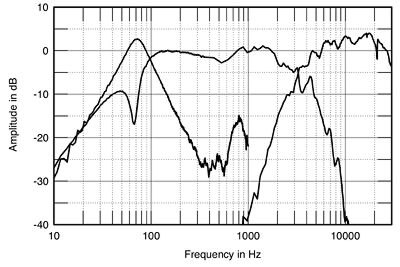
Fig.2 ProAc Response One SC acoustic crossover on tweeter axis at 50", corrected for microphone response, with the nearfield woofer and port responses plotted below 300Hz and 1kHz, respectively.
Fig.3 shows how these individual responses add on the tweeter axis at a distance of 50". The response has the classic swayback shape that I first heard with the LS3/5A: the BBC engineers determined that, because of the lack of true bass with a minimonitor, slightly boosting the upper bass, and balancing that at the other end of the spectrum with a similar peak in the top octave, gives a balance that subjectively sounds more natural than if the speaker measured flat. Without the upper-bass profiling, such a small speaker can sound thin, as with ProAc's original Tablette from over a decade ago. The Response One has no low bass—the low frequencies are 6dB down at 51Hz—but note how smooth its measured response is throughout the midrange and treble.
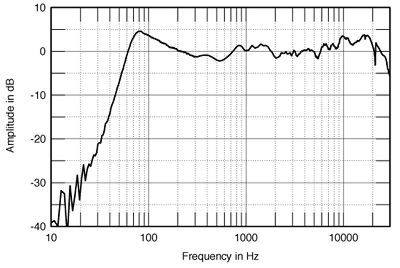
Fig.3 ProAc Response One SC, anechoic response on tweeter axis at 50", averaged across 30 degrees horizontal window and corrected for microphone response, with complex sum of the nearfield woofer and port responses plotted below 300Hz.
Somewhat compensating for this on-axis behavior, the lateral dispersion has a slight off-axis energy excess at the bottom of the tweeter's passband, as can be seen from fig.4. (This graph shows just the response changes, which means that the on-axis trace looks like a straight line.) In a small, sparsely furnished room, the Response One SC might sound just a little bright. But in a fairly large room like WP's, the speaker sounds neutral. In the vertical plane (fig.5), a large suckout develops in the crossover region for listeners who sit above the tweeter axis. As WP found, fairly high stands work best with the little ProAcs.
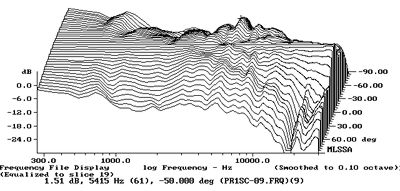
Fig.4 ProAc Response One SC, horizontal response family at 50", normalized to response on tweeter axis, from back to front: differences in response 90 degrees-5 degrees off-axis; reference response; differences in response 5 degrees-90 degrees off-axis.
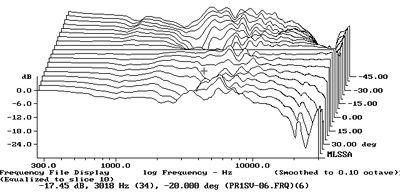
Fig.5 ProAc Response One SC, vertical response family at 50", normalized to response on tweeter axis, from back to front: differences in response 45 degrees-5 degrees above-axis; reference response; differences in response 5 degrees-45 degrees below-axis.

is it good choice for vocal and violin music?
i want to buy Cary 300 SEI for my ProAc 1sc
thanks.